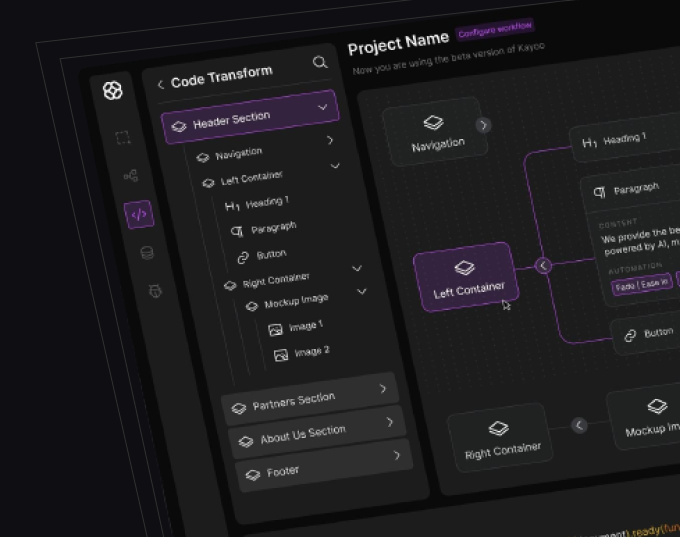Conversational AI
Services
Elevating customer interactions with custom built AI solutions with the leading Conversational AI development company

Services
Elevating customer interactions with custom built AI solutions with the leading Conversational AI development company
Heimler’s Journey From Blind Spots to Business Clarity – A3logics Unleashes the Power of Live Intelligence
Discover More
Redefining the Future of Lending – Cred Fintech’s Monumental Transformation with A3logics
Discover More
Revolutionizing Credit Risk – How A3logics and Heimler Redefined Trust and Precision with Machine Learning
Discover More
Transforming Risk to Opportunity – A3logics and Heimler Revolutionize Credit Risk Modelling
Discover More





















Our conversational AI development services are powered by the latest technology and designed to improve customer engagement, increase efficiency, and reduce costs. Join the list of elite conversational AI companies by partnering with A3Logics.

Our team of experts provides detailed consulting services to help you identify the best conversational AI solutions for your business. We work closely with you to understand your requirements and provide tailored recommendations.
Our conversational AI integration services ensure seamless integration with your existing systems and platforms. We make sure that the integration process is smooth and hassle-free, allowing you to focus on your business operations.
With the assistance of our conversational AI development company, you can get the benefit of custom-built software that caters to your business requirements. We develop software that is easy to use and provides a seamless customer experience.
Our expert team provides chatbot development services that use the latest conversational AI technology. We develop chatbots that are customized to your business needs and provide a personalized customer experience.
Our natural language processing (NLP) conversational AI solutions provide a more human-like interaction between your business and customers. Our NLP services use advanced algorithms that make conversations more natural and engaging.
With the help of our multimodal conversational AI services, you can avail a more immersive customer experience. Our solutions use a combination of text, voice, and video to provide a more engaging and interactive experience.
We offer bespoke conversational AI solutions that are tailored to meet the unique needs of businesses across various industries. Our conversational AI development services are designed to enhance customer experiences, increase efficiency, and drive revenue growth.

Our conversational AI technology services help healthcare providers to improve patient engagement, reduce wait times, and enhance the overall quality of care. With our AI-powered chatbots, patients can easily schedule appointments, receive medical advice, and access important health information.
Discover More
Our conversational AI software development services for banking enable financial institutions to streamline customer service, reduce costs, and improve customer satisfaction. Our chatbots can assist customers with account-related queries, provide personalized recommendations, and even help with financial planning.
Discover More
Our conversational AI tools for retail help businesses to improve customer engagement, increase sales, and enhance brand loyalty. Our chatbots can assist customers with product recommendations, provide personalized offers, and even help with order tracking and returns.
Discover More
Our conversational AI applications for insurance companies simplify the claims process, enhance customer experiences, and reduce operational costs. With our AI-powered chatbots, customers can easily file claims, track their status, and receive personalized recommendations for insurance products.
Discover More
Our bespoke conversational AI chatbot development solutions for the travel industry enhance customer experiences, increase bookings, and reduce operational costs. With our AI-powered chatbots, customers can easily search for travel options, make bookings, and receive personalized recommendations.
Discover More
We offer conversational AI services for the telecom industry that enable businesses to improve customer service, reduce costs, and enhance customer satisfaction. Our chatbots can assist customers with account-related queries, provide personalized recommendations, and provide technical support.
Discover MoreWe are highly acclaimed for providing exceptional conversational AI platform development services to enhance online presence. We can help you with
Our conversational AI platforms allow businesses to provide personalized and efficient customer service 24/7, leading to increased customer satisfaction and loyalty.
Our conversational AI service providers develop solutions that automate repetitive tasks, freeing up your team’s time and resources to focus on more complex tasks, ultimately leading to increased productivity and profitability.
Our custom built AI solutions can communicate with customers in various languages, allowing businesses to expand their reach and cater to a diverse customer base.
A3logics redesigned the logistics software of a mobile app solutions company’s end customer. The project included creating a comprehensive solution with reporting features, order tracking, and system updating.

“Their distinct flexibility and their strong communication were the project’s main assets.”


A construction technology company hired A3logics for custom software development. They created a construction digital platform that allows users to see project areas, distribute resources, and share data.
“Their software has proven essential in the construction sector.”

A3logics created and implemented a custom logistics software solution for a wealth management platform. This included developing features and integrating real-time tracking and data analytics functionalities.

“They ensured our collaboration went well by providing timely items and responding quickly to our requests.”


A3logics created and executed a personalized Generative AI system that featured chatbots for customer service, prediction algorithms, and AI-powered data analysis tools.

“Their technical expertise and reactivity were excellent.”


A3logics has developed an administrative management system for a health testing company. The product is designed to handle operations such as consultant matching, time reporting, and compensation management.

“The collaborative team we’ve worked with has shown great flexibility and excellent project integration.”


A transportation company hired A3logics to create a custom software program for freight activity tracking. The team also created invoicing tools and a driver-tracking system connected to a dispatch system.

“Their thorough inquiry and engagement with our team reflect their commitment to understanding our requirements.”




Marketing Head & Engagement Manager